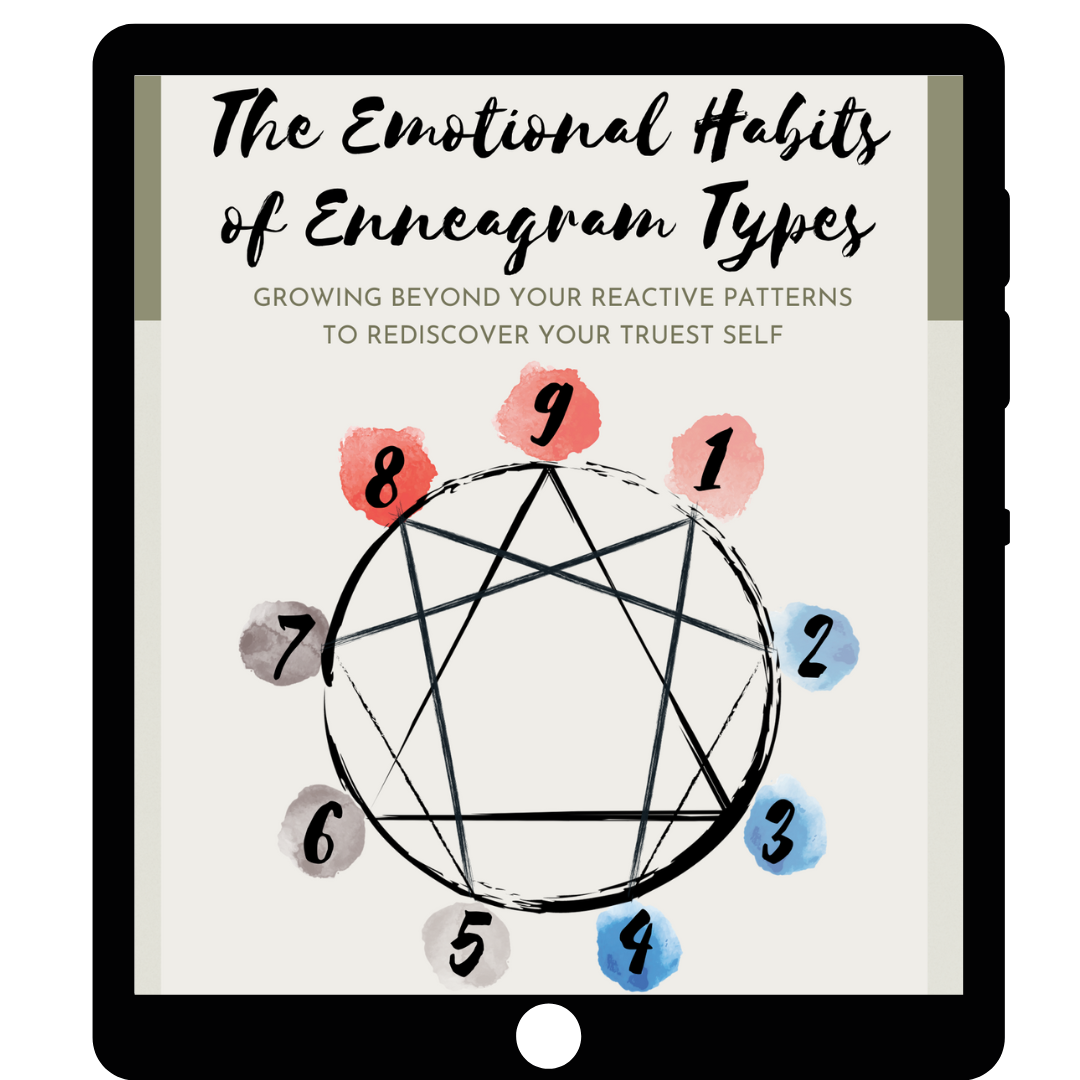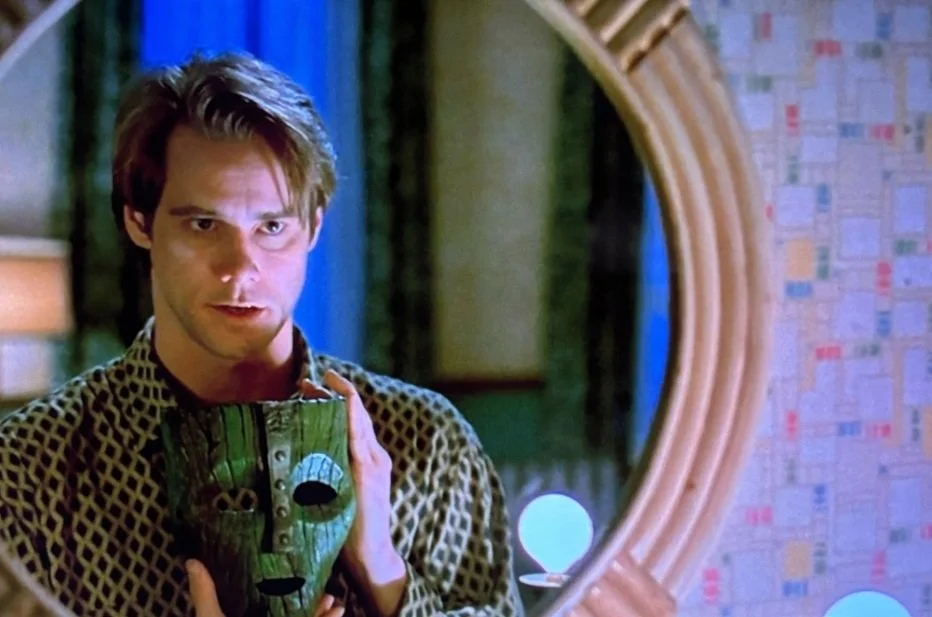The Enneagram is a powerfully comprehensive yet compact resource that reveals the “autopilot” ways we experience and respond to life events. Let’s figure out how to find your Enneagram type!
These nine Enneagram types (named “Type 1” to “Type 9”) describe nine reactive patterns of thinking, feeling, doing, and relating. These personality types helped people navigate through life experiences, especially ones where we did indeed need coping because we were truly limited in ability, resources, and opportunity (e.g., our childhood).
As we physically grow, our autopilots don’t upgrade with us. This means that what used to help us cope can sometimes even cause problems because there is a MISMATCH between what’s actually happening and what our personalities perceive is happening.
Thus, becoming healthy involves working ourselves OUT of our reactive patterns, so that we can engage and respond to present situations for what they actually need, not just what we’re used to.
Since our coping patterns are designed to stay automatic and invisible, knowing exactly what our reflexes look like can help us catch ourselves in the (re)act(vity) and deliberately choose into wiser ways of being.
Knowing our own Enneagram type and subtype can expedite this process.
(If you want to know what the nine types are, check out this series!)
How to Identify Your Enneagram Type + Subtype
Here are the resources I actually use in my therapy/coaching sessions to help people find their type. These resources (podcast, Youtube, books) are by Beatrice Chestnut and Uranio Paes, who are my Enneagram teachers and whose Professional Enneagram Certification Track I am currently going through.
(1) Listen to the Enneagram 2.0 podcast, Ep. 1
This episode is a general introduction of the nine Enneagram types.
Notice whichever types you have the strongest emotional/physical reaction to. Narrow down to the Top 2 types you most resonate with.
For example, I might resonate most strongly with Types 1 and 4.
(2) Listen to Ep. 4
The Enneagram type speaks to WHY people do what they do. Subtypes reveal WHAT, WHEN, WHERE, and HOW we do the WHY.
This episode is an introduction of the 27 Enneagram subtypes that are formed when we combine the 9 types with 3 subversions: Self-Preservation, Social, and Sexual.
Listen to all 27 subtypes, tuning more carefully into the Top 2 types you’ve narrowed before. Identify which subtype you most resonate with per Top 2 type.
For example, of Types 1 and 4, I resonate with:
Type One: Social > Self-Preservation > Sexual
Type Four: Self-Preservation > Social > Sexual
(3) Meet an Enneagram Professional to confirm your type and subtype
As an Enneagram Professional, I have been trained by Beatrice and Uranio to do a formalized typing interview process, which further explores the behind-the-scene motivations that go with what you naturally do without trying.
Normally the interview itself can be from 1-1.5 hours long, but if you’ve done Steps 1 and 2, we can shorten this process.
In this session, you can process:
What your type/subtype means
How it shows up in your life for better and for worse, and
What you can do going forward with this information
NOTE: This step is completely optional. Some people prefer to just stick with the other steps because it's completely free; these sessions are according to my hourly rate.
The main downside with the DIY route is that sometimes it can be difficult sometimes to identify one's type for three reasons:
Lookalikes
Lookalike subtypes may do the same behaviors but for different reasons.
For example, the Self-Pres Four may look like Ones, Twos, Threes, Fives, Sixes, Sevens, or Nines depending on what the other instincts are.
It took me a year and a half to realize that this is my type!! It would have taken me longer if I didn’t know about subtypes.
Countertypes
One of the 3 subtypes is known as a "countertype", which operates in the OPPOSITE direction of how a type generally is. The growth steps typically recommended to each type goes the OPPOSITE direction for the countertype.
As a Self-Pres Four, I’m supposed to practice being MORE emotionally expressive, not less (as would be the case for Social and Sexual Fours).
Most Enneagram enthusiasts aren't familiar with the subtype system because it's relatively new in Enneagram literature.
Societal norms and pressures
Many people may THINK that they’re a certain type because of stereotypes or cultural expectations.
For example, many (Christian, POC) women may FEEL that they’re a Type 2 because of how Twos are often described (caring, compassionate, emotional) to find out that they’re in fact Social Eights or Self-Preservation Sixes.
The typing interview may be of benefit to those who prefer having someone walk through the typing process with them and/or those who are unsure of certain dynamics. If you’re pretty sure from Steps 1 and 2 what your type/subtype is, you may carry on to Steps 4-6.
(4) Read the Ultimate PDF Guides for your Top 2 choices for type.
These guides, developed by Chestnut Paes Enneagram Academy, offer quick yet detailed information on each type, including key traits, common behavior patterns, and each of the 3 subtypes per type.
(5) WATCH the Youtube Enneagram Panel with Beatrice Chestnut
On each panel, you’ll hear from individuals who resonate with each subtype so you can learn more of what the type looks like, sounds like, and feels like from the inside. You will better notice the differences between each subtype.
This is especially important for people who resonate with Types 4 and 6, because the variation between those subtypes are SO GREAT that the subtypes may as well be their own distinct types. Similar motivations, but VERY different expressions.
(6) Get a copy of Beatrice Chestnut's books
*I may benefit from the Amazon links below. You may also search on Amazon yourself!
(7) BOOK an ENNEAGRAM therapy or coaching session
Because of the nature of our autopilots, we might KNOW what we do and even WHY, but still feel helpless to DO anything about it. Working with an Enneagram professional (especially ones trained by Beatrice and Uranio) may help you more effectively break through rigid patterns because you’re better able to:
See what your patterns look like as you’re autopiloting
Catch yourself during or not long after you’ve reacted, and
Shift course to how you’d LIKE to respond (if you haven’t reacted already) or repair (if you have) ruptured situations or relationships
Check out the blog series on the different Enneagram types:
What are your Enneagram type's emotional habits?
Grab this free guide that shows you how to grow beyond the patterns that keep you stuck!
© Copyright 2021 Joanne B. Kim. All rights reserved.
JOANNE B. KIM, LMFT
Joanne is a Licensed Marriage & Family Therapist and Certified Brainspotting Practitioner in San Jose, CA, who loves helping people create emotionally thriving relationships. She helps people EXHAUSTED by anxiety, shame, and an allergic reaction to anger create VIBRANT relationships where they matter, too.
Many of her clients are:
(1) the highly responsible, conscientious, and empathic types
(2) Enneagram Type Ones, Twos, Fours, or Nines
(3) Highly Sensitive Persons (HSPs)
(4) adult survivors of emotional abuse and neglect
The most common words spoken by those who’ve sat with Joanne:
“I thought it was just me. I’m NOT crazy!”
“I can finally figure out what to do with all these feelings!”









































In a conversation with Catherine Quiring of the Coming Home to Ourselves Substack, we explore the Enneagram through the lens of the show Ted Lasso, going into the importance of emotional intelligence, the role of instincts & subtypes in the Enneagram, and how these concepts can help individuals navigate their personal growth and relationships.